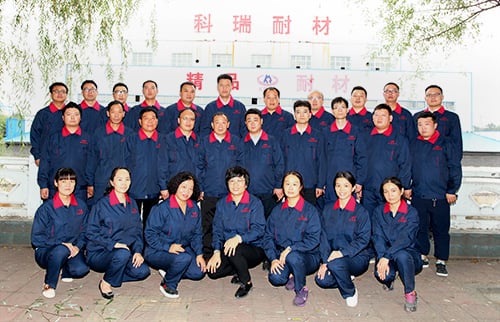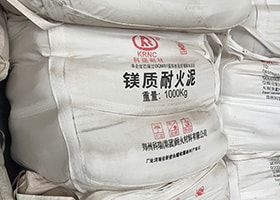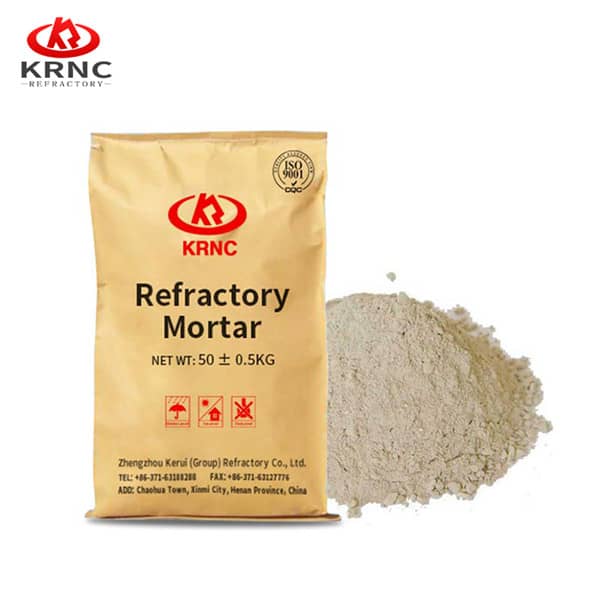
We are a refractory material manufacturer, with four major factories: heavy brick factory, light brick factory, monolithic refractory factory and fused-cast brick factory.
We promise to provide you with high-quality refractory materials.
Product introduction of refractory fire mortar
Refractory fire mortar is an auxiliary product for the construction of refractory bricks and kiln walls, which mainly includes fire clay mortar, high aluminium refractory mortar, silicon refractory mortar, magnesium refractory mortar etc.



Advantages of refractory fire mortar
Fire resistant clay mortar has high fire resistance, high glass erosion resistance, good working performance, strong bonding property, good water retention and workability, and there is no sediment after slurry making. It combines with high temperature ceramic to further improve all properties. The filling density is high and the water consumption is low, which makes the brick structure compact.
Using Method of refractory fire mortar
Mix thoroughly with water during use. The amount of water varies according to the concentration. The slurry suspended during construction should be sufficient and uniform.
The fire resistance of the fireproof mortar is 1580 ~ 1750 , with a water content ≤ 6%. The Fe2O3 content used in the construction of the blast furnace should be less than 2.5%.
Contents of Fire Clay Refractory Mortar and Binding Clay
| Name | For Blast Furnace & Fine Grain | Medium Grain | Coarse Grain |
| Chamotte | 80-85% | 75-80% | 65-75% |
| Binding Clay | 15-20% | 20-25% | 25-35% |
High Alumina Refractory Mortar
The main material of the high alumina refractory mortar is high chromate, and the binder is soft clay or chemical adhesive. The Al2O3 content is determined by the composition of the brick and the use requirements of the building part. High aluminium bricks can be widely used to repair various industrial furnaces, such as the top of the hot air furnace, the heat storage chamber, the combustion chamber, the top of the blast furnace, the top of the industrial furnace, the furnace wall, etc.
Parameters of High Alumina Refractory Mortar
| Item | – | KR-55A | KR-65A | KR-75A |
| Refractoriness, ℃ , ≥ | – | 1770 | 1790 | 1790 |
| Al2O3, %, ≥ | – | 55 | 65 | 75 |
| Cold bending resistance, bond strength, ≥ | 110 ℃ after drying | 1 | 1 | 1 |
| 1400 ℃ x3h after sintering | 4 | 4 | 4 | |
| Permanent Linear Change % | 1400 ℃ x3h after sintering | +1~-5 | +1~-5 | +1~-5 |
| Bonding Time, min | – | 1~3 | 1~3 | 1~3 |
| Particle size, % | -1.0mm | 100 | 100 | 100 |
| +0.5mm ≤ | 2 | 2 | 2 | |
| -0.074mm≥ | 50 | 50 | 50 |
Siliceous Refractory Mortar
According to the physical and chemical indexes, the silica refractory mortar can be divided into three types (93, 90, 85). The fire resistance is 1580~1700 ℃.
Particle composition: the residual particles on the 1.0mm sieve shall be less than 3%, and the particles passing the 0.2mm sieve shall be more than 80%.
Magnesia Refractory Mortar
Magnesia refractory mortar can be divided into MgO-82 and MgO-78 according to physical and chemical indexes. SiO2 content is 5% – 9%, and the loss during ignition shall be ≤ 2%.
Notes. Since magnesia refractory mortar has thixotropy, it should be softened from the barrel before use.
Notes: The type of refractory bricks you use determines what kind of refractory mortar you should choose. If you are not clear, please contact us and we will recommend appropriate products to you.

